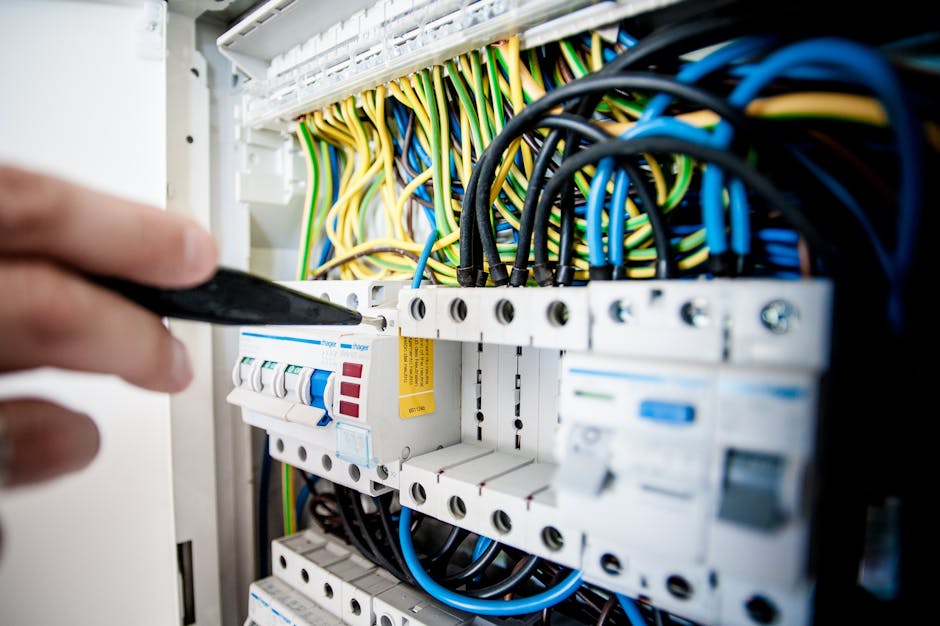How to Price Maintenance Contracts

Table of Content.
-
Understanding Maintenance Contracts
-
Factors Affecting Pricing
-
Monthly Plans vs. One-Time Fees
-
Benchmarking Against Competitors
-
Including Additional Services
-
Creating Transparent Pricing Models
-
Adjusting Prices Over Time
Understanding Maintenance Contracts
Maintenance contracts are agreements between a service provider and a client. These contracts detail the services that will be provided regularly. They help ensure that systems or equipment remain in good working order.
For example, think of a car. It needs regular oil changes and check-ups to run smoothly. Similarly, maintenance contracts are like a health check-up for your systems. They cover tasks like software updates or backups.
Different contracts might include various services. Some may focus on software updates. Others might include uptime monitoring. It's crucial to clearly define what services are included. This clarity helps prevent misunderstandings.
The pricing of these contracts depends on the scope of services. A more comprehensive contract usually costs more. It's like comparing basic and full-service options at a car wash. A detailed understanding of what's included helps in deciding the right price.

Factors Affecting Pricing
When it comes to pricing maintenance contracts, several factors come into play. First, consider the scope of work. A contract covering extensive services will naturally cost more. Think about the frequency of maintenance needed. Regular updates and checks require more resources, affecting the price.
Next, consider the complexity of the systems involved. Maintaining a simple website is different from dealing with complex software. The more intricate the system, the higher the costs.
Location also matters. If the service provider needs to travel, this can add to the price. Lastly, industry standards can influence pricing. Look at what competitors are offering as a benchmark. By understanding these elements, you can set a fair and competitive price.

Monthly Plans vs. One-Time Fees
When it comes to pricing maintenance contracts, two common approaches pop up: monthly plans and one-time fees. Both have their perks and challenges, and choosing the right one depends on what you're looking for.
Monthly plans are like a subscription service. You pay a set amount each month, and in return, you get regular maintenance services. This could include software updates, backups, and uptime monitoring. The big advantage here is predictability. You always know how much you're spending each month, which makes budgeting a breeze. Plus, regular maintenance means your systems stay up-to-date and secure.
On the flip side, one-time fees are all about paying once for a specific service. This might be attractive if you don't want ongoing costs. You pay, get the job done, and that's it. It can be a good option if your maintenance needs are infrequent or if you're working with a tight budget.
However, there are some things to think about. Monthly plans often come with more comprehensive services. You're paying for ongoing support, so companies are more likely to keep your systems in top shape. With one-time fees, you might save money upfront, but there's a risk of unexpected problems later. If something breaks, you may end up spending more to fix it.
Let's say you're running a small business website. Opting for a monthly plan might mean you always have someone watching out for potential issues. This can save you from costly downtime. But if your site is simple and rarely changes, a one-time fee for occasional check-ups might suffice.
Whether you go for a monthly plan or a one-time fee, weigh the pros and cons. Think about the level of service you want and how much risk you're comfortable with. Each business has unique needs, and the right choice for you depends on what fits best.
Benchmarking Against Competitors
Understanding how your competitors price their maintenance contracts is crucial. It gives you a clearer picture of the market landscape. Begin by researching companies in your industry that offer similar services. Take note of their pricing structures. This could include examining their monthly plans, software updates, and other features like backups and uptime monitoring.
Next, look at the value they offer. Are they providing more services for a lower price, or are they charging a premium for a unique feature? This kind of analysis helps you determine what clients might expect for the price they pay.
Let's take an example. If a competitor offers basic website maintenance with regular software updates at a competitive rate, you might consider offering additional features. This could be faster response times or enhanced security measures to justify a higher price.
Online reviews and testimonials can also provide insight into customer satisfaction. They might highlight areas where competitors excel or fall short. This can help you identify opportunities to differentiate your services.
Finally, consider the geographical location of your competitors. Prices can vary based on local demand and cost of living. By combining these elements, you create a comprehensive picture of the competitive landscape, helping you set a realistic and attractive price for your maintenance contracts.
Including Additional Services
When setting prices for maintenance contracts, it's smart to think about extra services you can offer. These services can make your package more appealing and set you apart from others. Let's look at some common additional services and how they can fit into your pricing.
One popular extra service is software updates. Keeping software up to date is crucial for security and performance. You can offer regular updates as part of your maintenance plan. This assures your clients that their systems will always be current and safe. Including software updates in your contract can justify a higher price because it adds significant value.
Backups are another important service to consider. Regular backups can save your clients from data loss disasters. By offering this service, you're providing peace of mind. Clients will know that their data is protected and can be restored if something goes wrong. You can charge a premium for this service, as it requires additional resources and expertise.
Uptime monitoring is a valuable service that ensures your clients' websites or systems are running smoothly. Constant monitoring helps catch issues before they become big problems. This proactive approach can prevent downtime, which can be costly for businesses. Uptime monitoring can be an attractive addition to your maintenance contract, allowing you to charge a bit more for the added security it provides.
When including additional services, it's important to be clear about what's offered. Make sure your clients understand the benefits and why these services are crucial for their business. Use clear language and simple examples to explain how each service works and what it means for them.
Think about offering different levels of service. For example, you could have a basic plan with just software updates and a premium plan that includes backups and monitoring. This gives clients options and allows them to choose what best fits their needs and budget. By structuring your offerings this way, you can cater to a wider range of clients and potentially increase your revenue.
Including additional services in your maintenance contracts can provide more value to your clients and help you stand out in a competitive market. It's all about understanding what your clients need and offering them solutions that make their lives easier.

Creating Transparent Pricing Models
When it comes to pricing maintenance contracts, clarity is your best friend. Customers appreciate knowing what they are paying for and why. To build trust, it's essential to create pricing models that are easy to understand. This means breaking down costs clearly, so there are no surprises along the way.
Start by listing all the services you offer, such as software updates, backups, and uptime monitoring. Each of these services should have a specific cost associated with it. This lets customers see exactly how much they are paying for each part of their maintenance plan.
For instance, if you offer monthly plans, provide a detailed list of what's included in each plan. Are there regular software updates? How often do you perform backups? Is there 24/7 uptime monitoring? Lay it all out so customers can see the value they are getting.
Transparency also means being upfront about any additional fees. If there are extra costs for emergency support or special requests, make sure these are clearly stated. This avoids confusion and builds a stronger relationship with your clients.
Using examples can help too. Show potential clients a sample invoice or a typical monthly statement. This gives them a visual idea of what to expect. Visual aids and examples can make abstract costs feel more real and understandable.
To wrap it all up, transparent pricing is about honesty and clear communication. It turns potential confusion into confidence, making customers feel secure in their decision to choose your services.
Adjusting Prices Over Time
When it comes to maintenance contracts, setting the right price isn't a one-time task. As time moves on, various factors can affect how you should adjust your pricing. Let's explore some of these factors and how they can influence your decisions.
One of the first things to consider is inflation. Inflation affects the cost of goods and services over time. When inflation rises, the cost of providing maintenance services often increases too. To keep up with these rising costs, you might need to adjust your prices. For example, if the cost of software updates or spare parts goes up, you should reflect this in your contracts.
Market trends also play a key role. Sometimes, new technologies emerge that can make maintenance easier or more complex. For instance, if a new tool reduces the time needed for repairs, you might lower your prices. On the other hand, if maintaining new technology requires extra skills or tools, you might need to increase your fees.
It's also wise to look at what your competitors are doing. If they adjust their prices, it might be a sign that the market is changing. You could conduct a market analysis to see if your pricing aligns with others. This doesn't mean you should follow them blindly but staying competitive is crucial.
Customer feedback is another important aspect. If clients feel that your prices are too high or too low, they might let you know. Listening to their feedback can give you insights into whether you should adjust your prices. Sometimes, small tweaks can lead to better customer satisfaction and loyalty.
Don't forget about the value of your services. Over time, the value you provide might increase as you gain more experience or improve your processes. If you're offering more value than before, adjusting your prices can reflect this added benefit to your customers.
Economic conditions can also impact your pricing strategy. In tough economic times, clients might be more price-sensitive, so being flexible with your pricing can help retain them. Conversely, during economic booms, there might be more room to increase prices as businesses have more to spend.
Lastly, regular reviews of your pricing strategy are essential. Set a schedule, maybe yearly or biannually, to review your costs, market trends, and customer needs. This helps ensure your pricing remains relevant and competitive.
Adjusting prices over time requires a balance. It involves understanding market and economic factors, staying competitive, and ensuring your pricing reflects the value you provide. By keeping an eye on these elements, you can make informed decisions that benefit both your business and your clients.
FAQ
What are maintenance contracts, and why are they important for businesses and clients?
Maintenance contracts are agreements between a service provider and a client to perform regular maintenance on equipment or systems. They are important because they ensure consistent performance, reduce downtime, and help in budgeting for both parties involved.
What factors should I consider when pricing maintenance contracts?
Several key factors influence the pricing of maintenance contracts, including the scope of work, frequency of service, client-specific requirements, geographical location, and the complexity of the equipment or systems being maintained.
Should I offer monthly plans or one-time fees for my maintenance contracts?
Offering monthly plans can provide a steady revenue stream and improve client retention, while one-time fees might be more attractive for clients looking for flexibility. The best option depends on your business model and client preferences.
How can I effectively benchmark my pricing against competitors?
Research your competitors by analyzing their offerings, pricing structures, and client feedback. Use this information to position your maintenance contracts competitively, ensuring they offer value while maintaining profitability.
What are the advantages of including additional services in my maintenance contracts?
Bundling additional services can enhance client satisfaction by offering comprehensive solutions. It can also increase revenue and differentiate your offerings from competitors. Ensure that the added services align with client needs and justify the increased price.
Why is creating a transparent pricing model important?
Transparent pricing builds trust with clients by clearly outlining costs and services included in the contract. It minimizes misunderstandings and disputes, fostering a positive business relationship and client satisfaction.
How often should I adjust the pricing of my maintenance contracts?
Regularly reassess your pricing based on market conditions, cost changes, and evolving client needs. Adjusting prices ensures that your contracts remain competitive and profitable while continuing to meet client expectations.